The State of SanDisk
by Kristian Vättö on December 5, 2014 8:00 AM EST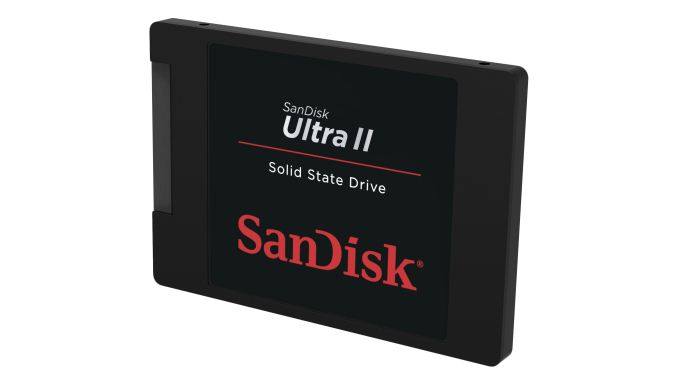
Back at Flash Memory Summit I had the opportunity to meet with all the key people at SanDisk. There is a lot going on at SanDisk at the moment with the Fusion-io acquisition, TLC NAND, and other things, so I figured I would write a piece that outlines SanDisk's current situation and what they're planning for the future.
I'll start with the client side. For SanDisk the big topic at this year's Flash Memory Summit was TLC NAND and we were given a sneak peek of the SanDisk Ultra II back at the show, which was then released a few weeks later. Since we have already reviewed the Ultra II, I'm not going to talk about the drive itself and its technical merits, but there are a few things that Kevin Conley, senior vice president and general manager for SanDisk's client business brought up about TLC and the client market in general.
I'm sure most of our long-time readers remember how SSD prices plummeted between 2010 and 2012. The reason for that wasn't a breakthrough in NAND technology, but merely the fact that all manufacturers increased their manufacturing capacity with the expectation of exponential NAND demand growth. As you can see in the graph above, the industry bit growth was over 60% year-over-year between 2010 and 2012, which lead to oversupply in the market and deflated the prices.
The reason why all NAND manufacturers invested so heavily on capacity increases was the popularity of smartphones and tablets; it was expected that the average storage capacity would increase over time. Basically, the NAND manufacturers assumed that decreases in NAND prices due to smaller lithographies would translate to higher capacity smartphones and tablets, but in fact the mobile companies chose to save on onboard storage and invest in other components instead (camera, SoC, etc.).
It's only been recently that smartphone and tablet manufacturers have started to increase the internal NAND and offer higher capacity models (e.g. the 128GB iPhone 6/6+), but even today the majority of devices are shipping with 16GB, which is the same capacity that the low-end iPhone 3GS had when it was introduced in 2009. Of course a large reason for the reduced sales of higher capacity smartphones/tablets has a lot to do with pricing, where 32GB devices often cost $100 more than the 16GB model.
Since the NAND manufacturers are now adding fab space at a slower pace, they are looking for alternate ways to increase bit growth and scale costs down – and that's where TLC kicks in. Because TLC packs in 50% more bits than MLC (three bits per cell instead of two), increasing the share of TLC production is an efficient way to boost bit growth without additional fab investments.
Currently about 45-50% of SanDisk's NAND production is TLC and by next year TLC will be overtaking MLC in terms of production volume. Note that SanDisk will have 3D NAND ready in 2016, so the graph doesn't imply that SanDisk will move to TLC-only production in 2017 – it is just the 2D NAND production moving to TLC since it will mostly be used in applications like USB flash drives and other low cost devices, while 3D NAND will be used in SSDs.
TLC will also be one of the driving forces behind average capacity increase. The main obstacle in SSD adoption is obviously the cost per gigabyte, and the lower production costs of TLC will help to bring the prices down. I think it's too early to say what kind of impact TLC will have on prices because currently there are only two drives available (SanDisk's Ultra II and Samsung's 840 EVO), but once more OEMs are ready with their TLC SSDs later this year and early next year, I believe we will see more aggressive pricing.
One of SanDisk's presentations at the show had a very interesting slide about the company's internal SSD deployment program. The question that is often debated when it comes to SSD endurance is the number of gigabytes that a user writes per day. There aren't really any studies with large sample sizes, but SanDisk's own study provides an interesting insight into typical office workloads.
What the data shows is that a typical office user only writes about 7GB per day on average and the number of people that write over 20GB is only a few percent, so very few users actually need more endurance than what TLC SSDs can offer (~20GB/day). Of course, everyone's usage is different and I doubt SanDisk's data takes e.g. media professionals properly into account, but it is still interesting and valuable data nonetheless.
Another thing I discussed with SanDisk was the obstacles for higher SSD adoption rate. While there is growth, the attach rate in the consumer space is still fairly modest and will remain as such for the next few years at least. Price is obviously one of the most important factors as hard drives are still an order of magnitude cheaper when measured in price per gigabyte, but I'm not sure if absolute price and capacity are the only hurdles anymore. I mean, 256GB is more than sufficient for the majority of users – especially now that we live in the era of Netflix and Spotify – and at ~$100 it's fairly affordable, so I think we have reached a point where the price is no longer the barrier preventing users from upgrading to SSDs.
This is actually the part where we ask for your, our readers, help. What is it that we or manufacturers like SanDisk could do to boost the SSD penetration in the market? Would live demonstrations at malls and other public places help? Or upgrade programs where you could take your PC to a store and they would do the upgrade there for you? Let us know your ideas in the comment section below and I'll make sure to bring them up with SanDisk and other SSD manufacturers. Remember that we are talking about the masses here, so think about your parents for instance – what would it take for them or other people who are not very comfortable around computers to upgrade their PCs with an SSD?
The one huge problem is of course the PC OEMs and convincing them to adopt SSDs for mainstream laptops. The race to the bottom practically killed the profits in the PC industry, which is why most of the mainstream (~$400-600) laptops have such a bad user experience (low-res TN panels, cheap plastic chassis, etc...). With already razor thin margins, the OEMs are very hesitant about increasing the BOMs and taking the risk of cutting their already-near-zero margins with SSDs. I know SanDisk and other SSD OEMs have tried to lobby SSDs to the PC OEMs as much as possible, but anything that adds cost gets a highly negative response from the PC OEMs.


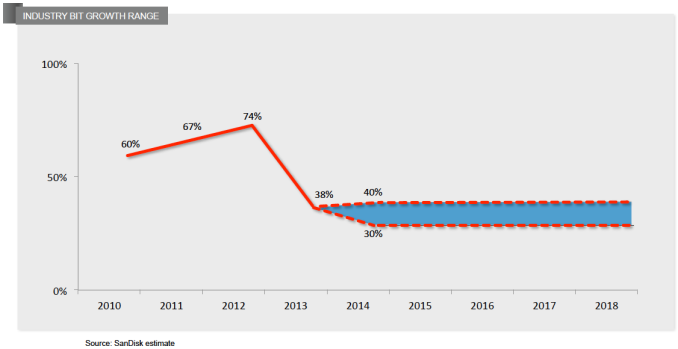
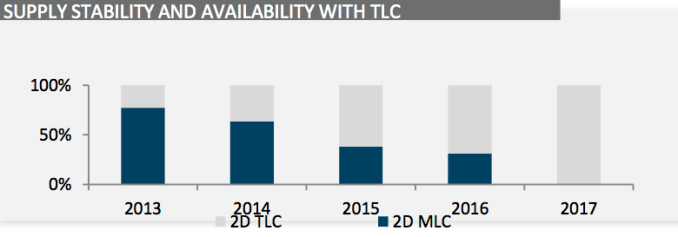
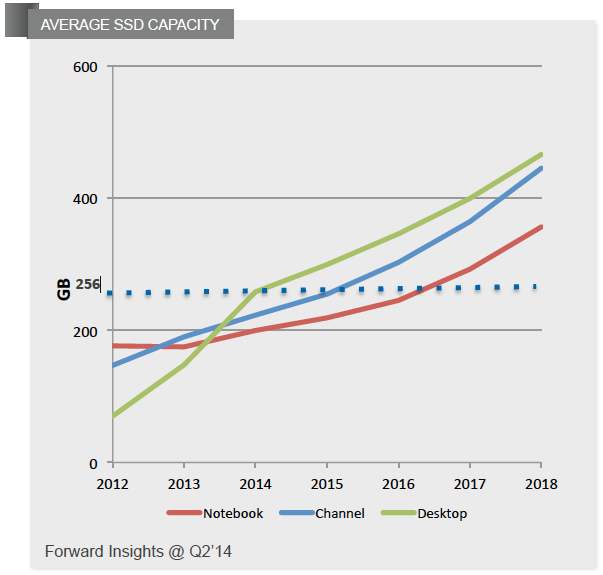
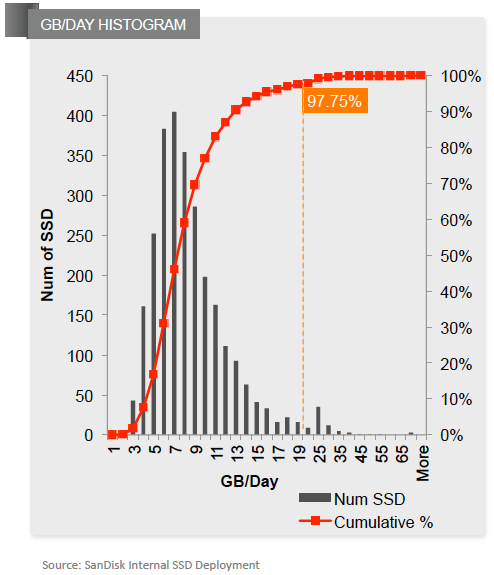









132 Comments
View All Comments
Cerb - Sunday, December 7, 2014 - link
...15% or more...fokka - Sunday, December 7, 2014 - link
what keeps me personally from upgrading to i.e an ssd-equipped ultrabook is that while 128gb and 256gb models are ubiquitous, it's hard to even get your hands on models with 512gb, or they let you pay through the nose.i'm using laptops with 250gb hdds since 2008, if i'm getting a new machine in 2015 i sure as hell want something slightly more future-proof.
for the average joe the problem is that he probably doesn't even know what an ssd is and why he should spend a good chunk of money on something with maybe a quarter of the storage space of a normal hdd.
others might not even care, as long as their computer is cheap and they can surf facebook and youtube.
in-store demonstrations might be a good idea, but it''ll be hard to reach a substantial share of the notebook and computer buying market.
the best way to get word out on the street though would be ssd vendors, or even a consortium consisting of intel, samsung, micron, sandisk, toshiba etc, to produce ads for tv showing the difference between ssd and hdd in 15-second clips. e.g. the ssd-laptop booting up, opening the browser, receiving emails, while the hdd-laptop still is on the windows loading screen.
or loading and importing/exporting stuff in lightroom in seconds, while the hdd-computer hasn't even started lightroom yet.
starting games would be another good comparison.
antialienado - Sunday, December 7, 2014 - link
I’m somewhat disappointed by the article, because it fails to mention 4 bit per cell tech that Sandisk sells on SD cards since 2009.I expected some word about introduction of 4 bit per cell on consumer SSD.
“What is it that we or manufacturers like SanDisk could do to boost the SSD penetration in the market?”
A lot of PCs are assembled by local city stores, for non geek people. They would welcome these features:
- Bundle HD with a SSD. Not a hybrid disk, but a pair of disks on the same box. Of course, that should save some money, so it would encourage assembling PCs with a SSD for OS, and HD for storage. Having both using the same space than a single HD would also be convenient, because many PC have space and power cables limitations.
- Sell expandable SSD. A SSD with SD card slots (or something faster), so the user is able to buy a cheap SSD, and expand it as needed. Selling the expansion memory should be much cheaper than selling the entire SSD, and would increase future income.
- Sell an USB INTERNAL SSD. Create a standard. Permanently plugging an USB SSD (or pen drive) to a notebook, netbook, or any portable is dangerous, because it is easy to break, and annoying. The USB device should be conveniently inserted inside, on a hole, like SD cards.
- Bundle software to move OS directories between the SSD and HD. A lot of space used on SSD is wasted with files that are rarely used. For example, Windows “winsxs” folder, is huge, and mostly useless, only accessed during software installation and uninstallation.
Also, I moved “My Documents” to HD, but that also move some OS subdirectories inside “My Documents”, like save game files. That defeats the purpose of the SSD, because those files are read from HD.
MS offers some tools, to move those directories, but they are hard to get, and to use. A simpler, downloadable software to do it would increase the value of a small SSD.
ZGRADT - Sunday, December 7, 2014 - link
I decided to replace my laptop's HDD with an SSD this weekend. I'm a pretty tech savvy guy, but even I was apprehensive. How was I going to clone a 512GB drive to a smaller SSD? All of the migrations I've done in the past were from a smaller drive to a larger one, and involved partition resizing, which usually ran into problems. And then there's messing with bootsectors. Yikes. I've done this once with Samsung's migration software (Norton Ghost), but I was only able to use that because it was a retail package that I was able to charge to my employer. This time I just have the bare drive.But luckily I found my USB3 drive enclosure to image the SSD to and things are progressing. Fingers crossed.
ppi - Sunday, December 7, 2014 - link
Education, education, education. Of consumers, and to an extent sales. Well, and not targeting the cheapest of the cheapest ones. But slightly above that mark should work.Mid-to-heavy office use is actually (in my opinion) by far the best case for SSD use. Having opened Outlook + 50-200 page PowerPoint/Word document with lots of charts and pictures taken from several of sizeable Excel files (which source data span from hundreds to tens-of-thousands lines). I personally like to have opened only the files I use (which leads to rather frequent reopening, at time), while some of my colleagues have like 30+ files opened at once (which leads to heavy HDD swapping). All of this highly taxing on storage performance, and exactly at the kind of where the SSD shine the most (lots of random reads and writes).
At home, we talk a lot about buying a new notebook for my wife. When I fire up my favorite local e-shop, I come to something like $1.2k price-tag (pre-VAT). She says (mind you, I am coming from country with $1.2k average and $1.05k median salary) that an el cheapo notebook for ~$400 (pre-VAT) should be more than enough. And at that point I tell her: but that one does not have SSD, and without SSD, it as slow as your old work notebook (ok, $2k, but 8 years), so it won’t start quick, and you won’t use it either! And you will rather use our el-cheapo $125 (pre-VAT) 7” tablet. And we end up buying nothing.
My ideal light-office-use notebook config would actually be: Intel Atom (or AMD’s variant, if they step up the game) + 4 GB RAM + 128 GB SSD/eMMC. Asus is almost there with their T100 line, but for the eMMC storage.
So what should be shown? (light Office use and gaming)
1) Make ads, side by side HDD vs SSD:
1.1 Boot time
1.2 Opening a browser and loading not-super-simple-webpage
1.3 Opening a fresh Word
1.4 What if you need to find specific Word document, but you are naming it not-really-well? Let’s do quick sequential check of what is inside 10 Word documents?
1.5 Show how long it takes from saying “I would like to show you my [insert occasion] pictures” to actually seeing them
1.6. How long does it take switching apps between, say, some The Sims and e-mail client/web broser
2) Educate the retail chain heads of sales depts in following sense: Show ppl that SSDs can and will significantly improve your customer’s experience. If you sell them the HDD just on price&capacity hoping for shorter upgrade cycle, they will most likely end up at Apple next time around.
3) Educate everyone around that SSDs are, apart from the much greater speed also:
3.1 Totally quiet
3.2 Not sensitive to vibrations/quick movements/etc.
3.3 Now highly reliable (see Techreport’s SSD endurance test)
4) Have M$ and/or others to finally make solid seamless SSD+HDD drive experience (i.e. SSD is the BIIIIG cache).
You will have to deal with the big data storage. In my opinion, the right answer for that is a NAS, but it has also its limitations.
Cloud, as a counterargument, is quite weak, because for any kind of mobile, cloud is pretty much utterly useless, because:
1) There are places in this world with very weak and very slow mobile data coverage
2) In places, where the coverage is good, the networks are often overcrowded, so you are as well as in the case above
3) Anything non-LTE is unacceptably slow for serious media (ok, HTSPA might be passable – but compare with your full-HD downloaded data)
4) For those living outside US, the insane roaming data fees make cloud completely useless (I am talking about $40 for 100kB, which happened to me in Switzerland), and hotel/airport Wifi is often quite slow
5) Remember X-Box One (i.e. something attached to a fixed line) always-connected-outcry?
Cerb - Sunday, December 7, 2014 - link
In offices, there's also downtime issues. ScanPST on large PSTs can take hours on HDDs, but mere minutes on SSDs. Same with CHKDSK. Major updates are quicker, too, as are OS re-installs/restores. Document backups are slow enough that 100Mbps LAN is barely a bottleneck, too, with HDDs. People don't like their PCs being unusable, but there's not much that can be done to speed up the existing HDD, which is usually what causes anything that takes a long time to take a long time.Hrel - Monday, December 8, 2014 - link
I don't think the masses will ever accept upgrading to an SSD. There are just too many variables to consider if you're not a techie. Which means there would need to be a program for someone else to install the SSD, load it with Windows and get all the drivers and software back on there for them.Short of creating local computer shops, like Discount Computers in Sarasota, FL, everywhere in the US I don't think it is going to happen. Perhaps you could work with Best Buy to offer a program where they sell the SSD's at Newegg prices and perform the install and load for $20 or so, can't be much of a cost premium for the labor otherwise people won't do it. Best Buy would have to be willing to accept very low margin's, so maybe specific partnerships could be formed to work out a "kick-back" of the SSD profits to participating partners, local stores or Best Buy's. Like how car dealerships earn nothing on new car sales but get bonuses for reaching certain sales quotas. Just spit-balling ideas here.
Short of that massively expansive program which would probably cost more to start up than you'd ever make from it, OEM's just need to include SSD's. They need to do so, more or less, at cost as well. 256GB M-SATA SSD's in ALL laptops would be huge, but they can't go around charging $200+ for the feature, like they overcharge for RAM. Mushkin prices, basically.
Hands on demonstrations would be helpful, boot up 2 computers, one with HDD one with SSD, load gmail and Word for instance. Let them feel the difference.
I also think it's important to not sell computers with ONLY an SSD. In the age of multi TB hard drives to go into a store and see a laptop with "128GB Storage" is confusing and off-putting to normal consumers. "Why did we go so far back? What is this? 2005?" So you have to include a 1TB hard drive with that 128-256GB SSD.
Maybe a new feature on the feature sheet for these as well, reflecting load times. This would need to be standardized to mean anything. Kind of like the Windows rating index actually, 7200rpm hdd's always max out at 5.9. Use a scoring system like that to reflect the increased responsiveness of the computers with SSD's. HDD=59 SSD=458 Expensive SSD=512, etc...
With M-SATA SSD's used in conjunction with 2.5" hard drives there's no reason at all for ANY laptop to be sold without an SSD. I think we should completely avoid anything under 128GB as well, unless it's being used strictly as a caching SSD.
But then with a dual storage solution you have to introduce people to the idea of managing their data on multiple drives. Which, sadly, is still a "strange new concept" to most common consumers. This problem will take time as it will require educating the masses to a certain degree. If they don't value the upgrade they won't be willing to pay anything for it.
Meinereiner - Monday, December 8, 2014 - link
I'm looking for a replacement of my server HDDs.Transfer speed on par with fast HDD is ok, size is what matters *g*I'd like to have a 'slow' SSD with 2TB+ and wouldn't mind if it's build for 3,5" size. SATA is fine, all those faster, newer connections are non-existant outside some high price environments.
SSD with: high capacity, ok transfer speed, low price.
xilience - Monday, December 8, 2014 - link
#sellingSSDsHonestly, I don't let any family member spend $x000 on a computer anymore, I tell them to buy cheap and I'll get them a $100 upgrade that will make it as fast as the computer that is 3x more expensive.
Youtube videos would be helpful. Get a vast array of older computers and show them running side-by-side with and without an SSD. People need to see a computer they can relate to, and they need to see the difference an SSD makes. Get popular models of computers going as far back as 6 years.
sunbear - Wednesday, December 10, 2014 - link
Incentivize the tech-savvy member of the family to upgrade the computer for relatives and friends.Swapping an ssd into an old computer makes it feel like a new computer. The problem is that the majority of consumers don't know what an SSD is and even fewer have the technical capability, free time, and confidence to attempt the upgrade by themselves (disassembling the computer, dealing with acronis, ensuring 4K block alignment, running crystal disk mark to verify performance, etc). The only reason that any of the computers owned by any of my relatives contain and ssd is because I installed it for them. If you want to sell more ssd's the best way would be to incentivize tech-savvy family members to do the installation for all family members. Perhaps have a incentive program whereby if you buy 3 SSDs you get a 4th SSD free would do the trick.
Manufacturers could of course do a better job of simplifying the process. Samsung's ssd magician does a pretty good job, but it doesn't cover every step in the upgrade process. For example it won't walk you through the computer disassembly / re-assembly steps and all the tools required which of course depend on your model of computer.
Also, i think the SSD manufacturers should offer spacious 1, 2 and 4TB hybrid drives. And I'm not talking about the disappointing Seagate models with a puny 8GB read-only ssd cache, but rather models containing at least 128GB SSDs with read and write caching. There's a big gap I. The market here (at least until ssd pricing becomes on par with mechanical drives).